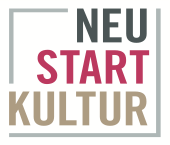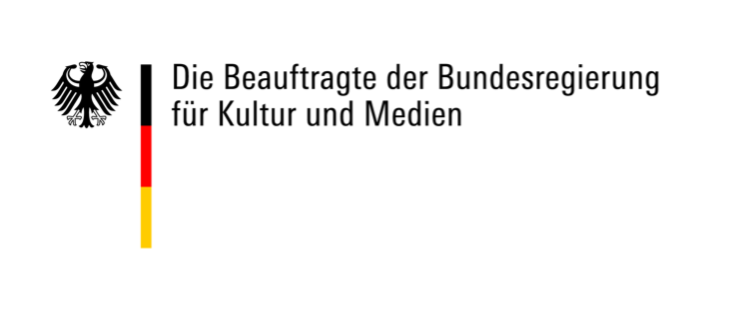Breaking the mold over time: Lillian Stillwell
Interviewed by Katelyn Skelley
Interview date: 14.6.2021

Lillian Stillwell in rehearsal with Sophie Flannery Vergères and Jubal Battisti Photo: c. Mayke Hegger
Lillian Stillwell is a choreographer from Minneapolis, Minnesota who was recently designated dance director and head choreographer at the Theater Münster beginning in Season 2022/23. She has worked at opera houses and theaters throughout Europe since 2007, most recently at the Norwegian National Opera & Ballet, the Royal Danish Opera and Gärtnerplatztheater München. She is studying for an Executive Master’s in Arts Administration at the University of Zürich. With her Basel-based company SNOW productions, she has choreographed immersive dance productions, collaborated with all-local artists and developed hybrid live/digital formats. Lillian and I had our first interview in October 2019 when her daughter Jeanne was 2 years old. She spoke about how going through the major transitions of having two hip replacements and becoming a mother after her performance career motivated her towards becoming a leader in the dance field. We caught up in June 2021 over zoom, while Lillian was in Münster preparing for the upcoming season, to speak about her unique path towards becoming a leader in the German theater system, the impacts of Corona on her personal and professional life and her multifaceted vision for a sustainable way of developing artistic work, all influenced by her experiences as a mother.
Katelyn: I wanted to start with a really open question of what you’re currently busy with?
Lillian: Well, I’m busy with the transition to Münster. I’m building a new dance company and part of the artistic leadership team for the entire theater. I’m meeting a lot of people in the community, trying to understand a new city and see where our future company can fit in. I’m making decisions about the dancers who will be a part of the future company, which is a long process that is not yet finished. And I am choreographing and running our company in Basel. And my family, of course.
Katelyn: Could you share what this position is and when it started?
Lillian: Yeah, sure. I am the designated dance director and head choreographer at the Theater Münster, starting in the season 2022/23. It started when I was asked by Dr. Katharina Kost-Tolmein, who has by now been designated Executive Artistic Director (Generalintendantin) of Theater Münster, to join her when she applied for the position. The process began in Winter 2020.
Katelyn: When we talked last you were just starting the master’s program at the University of Zürich.
Lillian: I even forgot. Along with everything else, that’s been a hugely enjoyable part of my life since we last talked.
Katelyn: You were speaking a lot about going towards a leadership position and finding a way to carve that out in your life. Could you speak a bit about how you got to this position from when we talked in 2019?
Lillian: Yeah, it’s nice to remember back to that moment. After Jeanne was born, my perception of time changed. Suddenly it had a different value. I didn’t want to do anything that would take me away from her unless I really, really loved it. I longed for more financial stability and wanted to stop traveling so much after 10 years of being away from home most of the year. That meant expanding my skillsets, learning new things, saying no things I would have said yes to in the past, and taking more risks. I also felt a tremendous sense of responsibility to live up to my full potential so that I could be an example for my daughter. Not to hide or hold back out of fear. Like Nelson Mandela said – liberating ourselves from fear automatically liberates others. What that all meant concretely was going into leadership. I started to realize: if it’s not going to be me, then who’s it going to be? I knew that if I didn’t go for it, I wouldn’t be fulfilling my potential and I would not be able to give as much to others.
Katelyn: When you speak about being able to give back experiences you had, could you be more specific?
Lillian: On the one hand, you could look at the shiny side – I was a performer and am a choreographer and can give back those experiences. But on the other side, the adversities and obstacles also make me who I am, and I want to share those too. By integrating those experiences into my work, I can offer a more authentic view on who and what a leader, choreographer, mother in dance looks like. My personal flaws and weaknesses are part of my strength and they motivate me to create. One of the ways I can give back is by simply being a woman in the room. I did not have many women or mothers in front me when I was a dancer and there are even fewer sitting around the big tables now. Persevering in the dance world, where strong male networks are still at work, requires from women a mix of stubbornness, charm, adaptability, opportunism and most of all the ability to deliver excellent work under pressure. I suppose it took me longer than some others, but here we are. And I guess that’s also what I want to give back to others, that it’s possible. Even if you don’t look or act exactly like the people at the front of the room, you could become one of them by being exactly who you are.

Lillian Photo: c. Lucie Schrag
Katelyn: Could you speak about some of those things that make you unique or what you referred to as adversities?
Lillian: My hips are such a big thing for me. They forced me to humbly let go of my body being my primary tool. I see dancers and choreographers that can still move like crazy in their 50s or even older. My body didn’t give me that much time. The fragility of life is always in front of me. I experienced many unexplained miscarriages before having our daughter. People close to me died or got sick suddenly. Those experiences forced me to confront how much can change at any moment. I realized that every day in the studio is precious and I try to reflect that back into the way I work. To not place demands on dancers that are unreasonable but to stay in the moment of being grateful for the fact that we’re dancing, that we have the privilege to dance and that we enjoy the respect of a culture that sees value in what we do. Also, I think becoming a mother and Covid made me even more conscious of and curious about sustainability and what that means to sustain something. When you have a child, you’re basically working the whole time just to preserve this little life. To make sure she doesn’t run into the street. That she has food. That she’s not going to get a toe chopped off or whatever. It sounds absurd, but that’s one of the main jobs as a mother. I began to translate that experience into sustainability and ask: What does it mean to preserve resources in order to keep something alive? I have been very busy translating this question into a set of practices for the dance company in Münster. I experienced a lot of waste in theaters, I have to admit. There’s a place for waste in art and for throwing away and cutting off or scribbling over. But careless waste, waste that wasn’t intentional as part of a practice, is what I’m looking to avoid. I would like to bring more consciousness to that in the company.
Katelyn: I’m really interested in that the sustainability, in a way, was sparked through being a mother. Could you describe a few ways that you’re thinking about this transfer in more detail?
Lillian: Yes. We are developing a contest for young set designers to create a ‘sustainable dance stage’ which will use modular principles and be used in different configurations over two seasons by the dance company. We look forward to having a sustainable impact on resource usage and also on the workflow at the theater. This goes hand in hand with the idea for a sustainable costume collection from sustainably sourced fabrics. And the rehearsal director is very fascinated by how dancers learn and retain material beyond mere physical repetition. Choreographically, I’m thinking of sustainability in relationship to music at the moment. Many choreographers of my generation use collage methods to create a whole, taking what they like, leaving the rest. I am curious about how existing music can be reinterpreted and re-framed in a modern context. It’s all related to motherhood, which has demanded that I reevaluate my priorities – energetic, financial, time, emotional. Kids are content with very little. Jeanne loves sticks. She makes an ice cream stand out of a hole in a wall. Kids force you to radically re-think what is needed in order to be creative. Or to be happy.
Katelyn: What does it mean to be working in the dance field now especially through the pandemic? What is really pressing or important to our field?
Lillian: I love that question. My answer is more an attempt to describe a feeling. During the pandemic, everyone was catapulted into a physical encounter with their bodies not unlike what we dancers engage with on a daily basis. We change our movement based on different states, forms, restrictions or expansions. Now, everybody has had a radical change in their physicality. This shared experience has brought a heightened awareness of the body and its role in well-being to everyone. I think dance has an essential role to play at exactly this moment. The fragility of each day, of life, is so much more present. The not-knowing and unpredictability. Dancers are devoted to something that disappears, something intangible. Now everybody has shared that experience by confronting the invisible pandemic and organizing their bodies around a set of invisible requirements.

Lillian Photo: c. Nils Klinger
Katelyn: What is your vision for the dance company? Could you share a bit of what that is?
Lillian: Of course, I’d be happy to. I really think we are all longing for sincere, felt, shared live experiences at the moment. And for groups. All of these things will play a role in my choreography and programming in Münster. I see dance as a connective art form. Beyond aesthetics and visuals, dance connects people. It’s about experience, experiencing something, living a ritual, being together. What else? The company has 12 dancers. I never imagined leading a company of this size. I have respect for everyone who does or has. 12 people looking at you like, “What’s next, Chief?” Gulp.
Katelyn: Speaking of the dancers and your experience, if a woman in the company was pregnant or a mother, how would you navigate that?
Lillian: That’s such a good question. You know, I’m just one mother. I’m just one woman. One thing that would be important to me would be to gather more information about that person. Ask her what she needs, not just assume that what I needed or who I was is the same as everyone else. And then try to gather that input and energy and use my position to create policies and structures. Good that you mention it because I need to start thinking about it right away. And because motherhood goes hand in hand with health for all dancers, the other aspect to consider is people who don’t become mothers, or fathers. So much can happen. It is not always by choice that people do not become parents. Yet the mothering energy is in all of us, also the men. What do we do with the mothering when there are no children? I am asking myself how I can turn these questions into artistic content. I want to make space for the physicality of mothering, of women. We have a lot of male physicality happening now. And that’s great. But how can I make space for the other qualities? The generations turn over, some people have kids, and some people don’t. Why? I somehow need to put this on stage. And with the mothers themselves, who are doing all the multitasking, I would want to find ways to reduce their workload. Mothers become very efficient and can bear more than they could before. Childcare demands so much stamina. So, I’d think about: how could I get the mothers in the company to work less?
Katelyn: That’s really exciting. Is there anything else that you would like to touch on? (Her daughter Jeanne comes into the room)
Lillian: My little flirt. (Jeanne laughs) She knows that this is my last work thing and then I have a couple of days off. I’ve had three weeks without a break. But we should catch up sometime in real life because I’ve been talking about myself for 60 minutes or something. (Jeanne shows Lillian something) Thank you for showing me.
Katelyn: Yes, let’s do it. I would love to sit and talk with you.
Lillian: Well, I wish you a really nice evening. Thank you.
Katelyn: Thank you.



Gefördert durch die Beauftragte der Bundesregierung für Kultur und Medien im Programm NEUSTART KULTUR, Hilfsprogramm DIS-TANZEN des Dachverband Tanz Deutschland.
